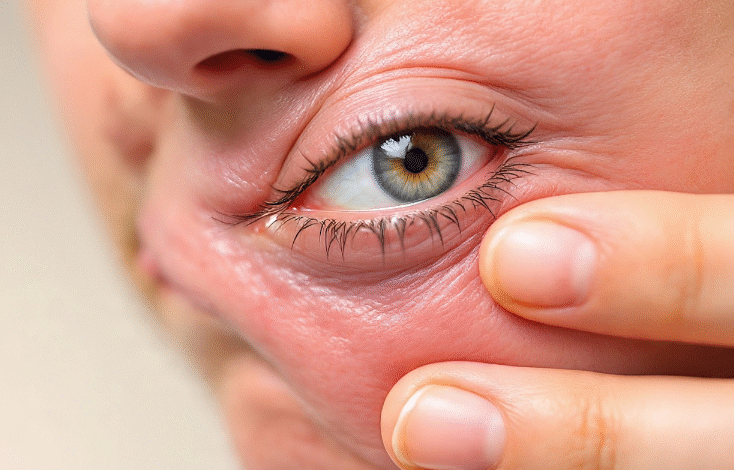Pink Eye Symptoms: How to Spot and Stop It Early

Pink eye symptoms can be easy to miss at first, but they can get worse fast if not noticed early. Pink eye symptoms often start with red or itchy eyes, and you might feel like something is stuck in your eye. Your eyes may tear up a lot, or you may wake up with crusty eyelids. This happens when a little see-through part of your eye, called the conjunctiva, gets swollen or infected. Some people get pink eye from viruses, others from bacteria or allergies. It’s very important to know the early signs so you don’t spread it to others, especially your family or friends.
Some pink eye symptoms may feel like other problems, so learning what to look for helps a lot. If your eyes are red and itchy, and you have watery stuff or goopy stuff coming out, it’s time to check if you have pink eye. If it hurts to look at bright lights or you wear contact lenses and your eyes feel bad, don’t wait—go to the doctor. Kids get pink eye a lot, especially in school. Adults can get it too, especially if they touch their eyes with dirty hands. Cleaning your hands, not sharing towels, and using your own eye makeup can help stop pink eye from spreading. Always act early when you see pink eye symptoms.
Table of Contents
What Are the First Pink Eye Symptoms to Notice?
The first pink eye symptoms are usually easy to see if you know what to look for. Most people start with red eyes that look like they’ve been crying. The eyes may feel itchy, like there’s sand inside them. Sometimes, your eyes will water a lot or have a gooey discharge, especially in the morning. You might wake up with your eyes stuck shut. These signs can happen in just one eye or both eyes. Many people also feel a little burning or pain in their eyes. If you touch your eyes a lot, it can make the symptoms worse. It’s important to notice these early signs so you don’t spread pink eye to others. When you spot these symptoms, wash your hands, don’t rub your eyes, and tell a parent or doctor. Early help makes it easier to get better fast and not pass it to friends or family.
How Pink Eye Symptoms Look in Kids vs Adults
Pink eye symptoms can be a little different for kids and adults. Kids often get pink eye in both eyes and may also have a runny nose or sneeze a lot if it’s caused by allergies. Their eyes can look very red and feel itchy all day. They might rub their eyes a lot or cry because it feels uncomfortable. Adults can also get red, itchy eyes, but they may notice light hurting their eyes or feel like something is stuck inside. Adults may get pink eye from contact lenses or working in dusty places. Both kids and adults may have yellow or white discharge from their eyes. It’s important to check symptoms early in both age groups so it doesn’t spread at home or school. Telling the difference helps get the right treatment. Kids might need help keeping hands clean, while adults should avoid eye makeup or lenses.
What Causes Pink Eye Symptoms to Show Up?
Pink eye symptoms can start for many reasons. One of the biggest causes is a virus, like the kind that also gives you a cold. This virus can get into your eye and make it red and itchy. Bacteria can also cause pink eye, especially if you touch your eyes with dirty hands. Some people get pink eye from allergies, like pollen or dust. If your eyes get splashed by soap or a strong cleaner, you can also feel the symptoms. Newborn babies sometimes get pink eye if their tear ducts are not open all the way. Even using someone else’s towel or eye makeup can spread pink eye. That’s why it’s very important to keep your eyes clean and never share eye things. Knowing what causes pink eye helps you stop it early. When you know where it comes from, it’s easier to treat it and keep it from spreading.
Pink Eye Symptoms You Should Never Ignore
Some pink eye symptoms may seem small at first, but they can become big problems. If your eyes hurt a lot, or if it feels like something sharp is inside, don’t wait—tell an adult or see a doctor. If your vision is blurry or if lights hurt your eyes, it could be more than just pink eye. People who wear contact lenses should be extra careful. If pink eye symptoms don’t go away in a day or two, it might be a strong infection. Babies with swollen or very red eyes need help right away. Also, if your eye has thick green or yellow discharge that comes back often, it could be serious. These signs should never be ignored. It’s better to get help early than wait too long. Doctors can give the right medicine so your eyes can feel better fast. Taking quick action helps save your sight.
Easy Ways to Stop Pink Eye Symptoms from Spreading
Stopping pink eye from spreading is easy if you follow a few simple rules. First, always wash your hands with soap and water. Don’t touch your eyes, especially if they are itchy or watery. If you use tissues, throw them away right after use. Never share towels, pillows, or eye drops with anyone. Make sure to change your pillowcase often and clean your bedsheets too. Kids should stay home from school until their symptoms go away. Adults should also avoid close contact with others. If you use eye makeup, stop using it until your eyes are all better. You can even throw away old makeup to stay safe. These steps are super helpful to keep others from getting sick. Pink eye spreads fast, but clean habits can stop it quickly. The cleaner you are, the better chance you have of keeping your family and friends healthy.
When Pink Eye Symptoms Mean You Should See a Doctor
Most pink eye cases are mild, but sometimes you need a doctor to check your eyes. If your eyes hurt a lot, or if your vision changes, don’t wait. Some symptoms like blurry sight, sharp pain, or being sensitive to bright lights can mean something more serious. If your eyes are very swollen or the redness gets worse, a doctor should take a look. Also, if you wear contact lenses and feel pain or see yellow goo, remove them right away and call your eye doctor. Babies with pink eye should always be seen by a doctor, even if they don’t cry. If your pink eye doesn’t get better after two days of home care, you need medicine to help. Doctors can give eye drops or creams to heal your eyes faster. Getting help early makes healing easy and keeps your eyes safe. Don’t ignore pink eye—check with your doctor if unsure.
How Long Do Pink Eye Symptoms Last?
Pink eye symptoms don’t last forever, but the time can be different for everyone. If you have viral pink eye, it can last from 5 to 7 days and go away on its own. Bacterial pink eye may need antibiotic drops and can go away in 2 to 4 days after starting medicine. Allergic pink eye may stay longer if you’re still around the thing that causes allergies, like pollen or dust. Most people feel better in a week or so. It’s good to stay clean and rest your eyes. Don’t wear contact lenses or use eye makeup until the pink eye is gone. Even after your eyes look better, you should still wash hands and not share things. That helps keep others safe. If your eyes don’t feel better after one week, see a doctor. Knowing how long it lasts can help you be patient while you heal.
Conclusion
Pink eye symptoms can start small, like red or itchy eyes, but they can grow if you don’t take care of them. Knowing what causes them and what to look for can help you act fast. It’s important to stay clean, not share things, and watch your eyes closely. Catching the symptoms early makes it easier to treat and stop from spreading.
Even though pink eye can be annoying, it usually goes away with simple care. If your symptoms don’t go away or feel worse, visit a doctor. Taking care of your eyes and keeping clean can help you and others stay safe. It’s always best to be careful and smart when it comes to pink eye.
FAQs
Q: What are the first signs of pink eye?
A: Red, itchy, and watery eyes are usually the first signs.
Q: Can pink eye spread to other people?
A: Yes, it spreads easily through touch or shared items.
Q: Should I go to school or work with pink eye?
A: It’s better to stay home until symptoms go away.
Q: How do I treat pink eye at home?
A: Use clean hands, warm cloths, and rest your eyes. Don’t rub them.
Q: When should I see a doctor for pink eye?
A: If it hurts, vision is blurry, or it doesn’t get better in 2 days.



